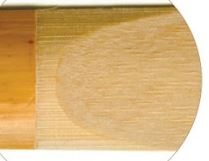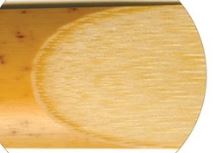The role of the saxophone reed and the clarinet reed in the issue and timbre
Published : 2018-06-29 12:11:45
Categories : ,
The reed is at the heart of the emission process
We had already seen how the vibration of the saxophone reeds or clarinet reeds plays a fundamental driving role in sound generation. As a reminder, the musician's breath being higher than the atmospheric pressure, it will cause the reed to vibrate because it will act as a valve allowing a small amount of air to pass through the beak creating a depression that will fold the reed against the table of the saxophone mouthpiece or clarinet mouthpiece creating a wave that will condition the sound of the product.
To each musician, his ideal saxophone or clarinet reed
Quality of reed cutting
In general, the cut of the saxophone reed or clarinet reed plays a key role in the quality of sound, especially during emission, attack or articulation.
Anche Filed vs Unfiled
<Also, the cut of the reed determines its classical or jazz orientation as shown in the table below:
Filed | Unfiled | |
|
| |
Cut | French | Anglo-saxon |
Manufacturing | Scratched bark | Non-scratched bark |
Sound | Round, centered | Open, bright |
Style | Classical | Jazz |
Bec | Ebonite, rather closed | Ebonite or metal, rather open |
Reed models |
It should be noted, however, that this is a general orientation, because there are jazz musicians who play filed, manufacturers have understood this well, that is why we have seen since the 90s on the market a model of saxophone reed filed for jazz such as the saxophone reed v16 Vandoren, Jazz Filed saxophone reed from Rico / D'Addario or the Marca Jazz saxophone reed.
Some uses of the saxophone and clarinet reeds for sound effects emission
Le Slap
| Notation | Graphic | Phonetic |
 |
- Reed slamming on the beak thanks to the spring effect of the reed which, moved away from the beak by a suction cup effect produced by the tongue, will snap back on the beak
- It can be of variable intensity:
- percussive, sec
- with height it will then have a sound initiation function or melodic
- It is d'as much louder as the reed is weak, it puts the reed to a severe test and promotes its rapid wear
- It may also vary in duration
- The number of slaps depends on the saxophonist's training, knowing that a particularly trained language can chain up to 20 slaps
- It is almost impossible to obtain in the register of suraigus
- The maximum speeds according to the instrument are calculated in pulsation / min (1 pulsation = 4 attacks)
- saxophone soprano : 108
- alto saxophone : 104
- tenor saxophone : 100
- baritone saxophone : 96
- bass saxophone : 92
The window
| Notation | Graphic | Phonetic |
- It is a effect specific to the saxophone
- It is obtained by using the subtone by choking the reed using the lower lip or tongue which will decrease the amplitude of its vibration and therefore produce a sound less rich in harmonics
- It is practiced only in the low registers
Vibrato
- It is obtained by a movement of pressure-relaxation on the reed by the lower lip which will create a sound inflection
- It is defined by:
- its frequency which can go up to 4 vibrations for a tempo of 100
- its amplitude which will be all the more important as the note is acute because the sound inflection is 8 to 10 times more important downward than upward
- Finally, it should be noted that today, due to evolution, some saxophonists now play without vibrato
In summary
- The reed plays a fundamental stimulating role in the sound emission mechanism
- The cut of the reed determines the quality of the sound
- The filed or unfiled cut and the hardness of the reed determine its adaptation to a style of music or the technical level
- The reed's grip in the mouth conditions the sound emission



